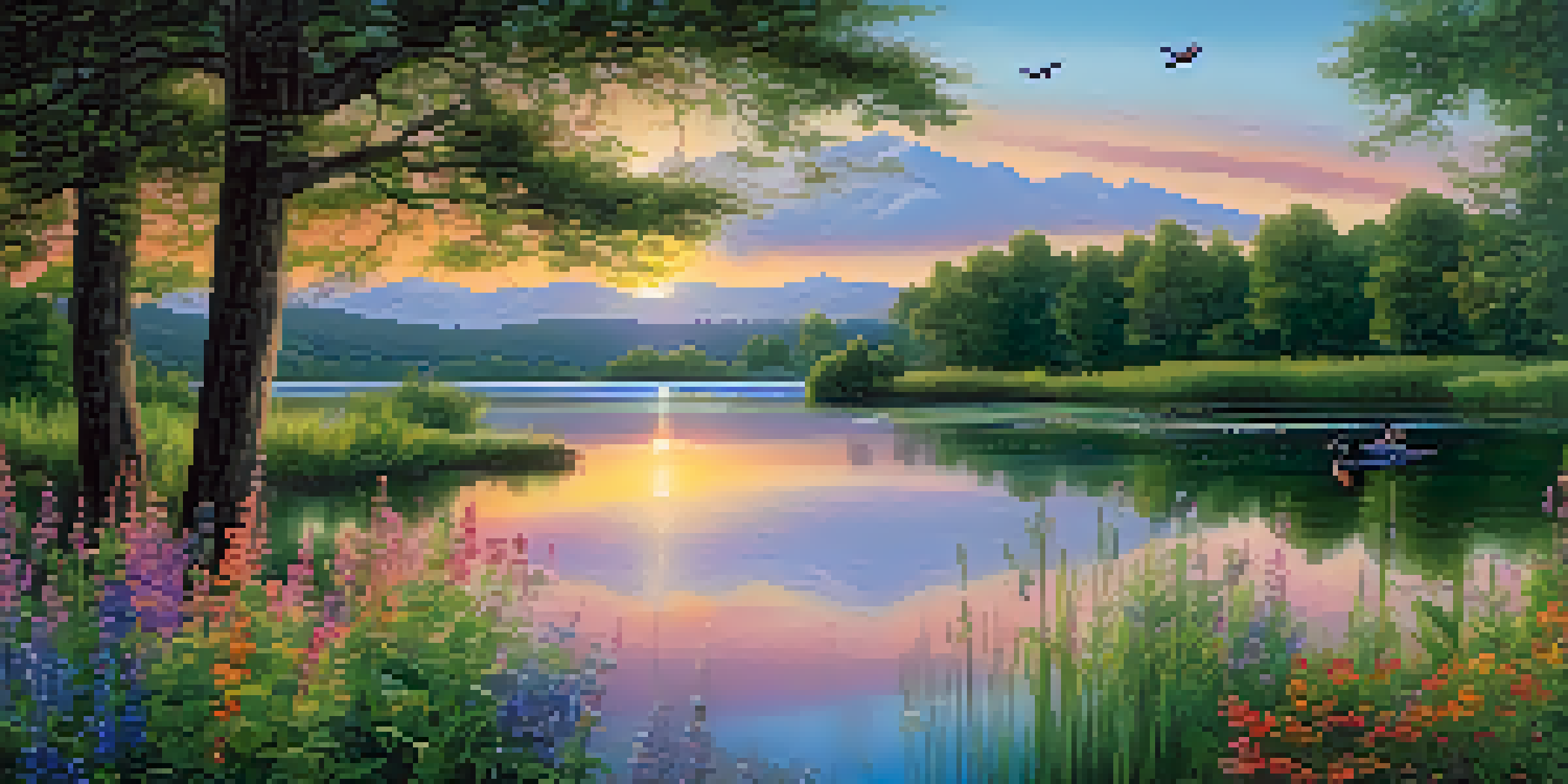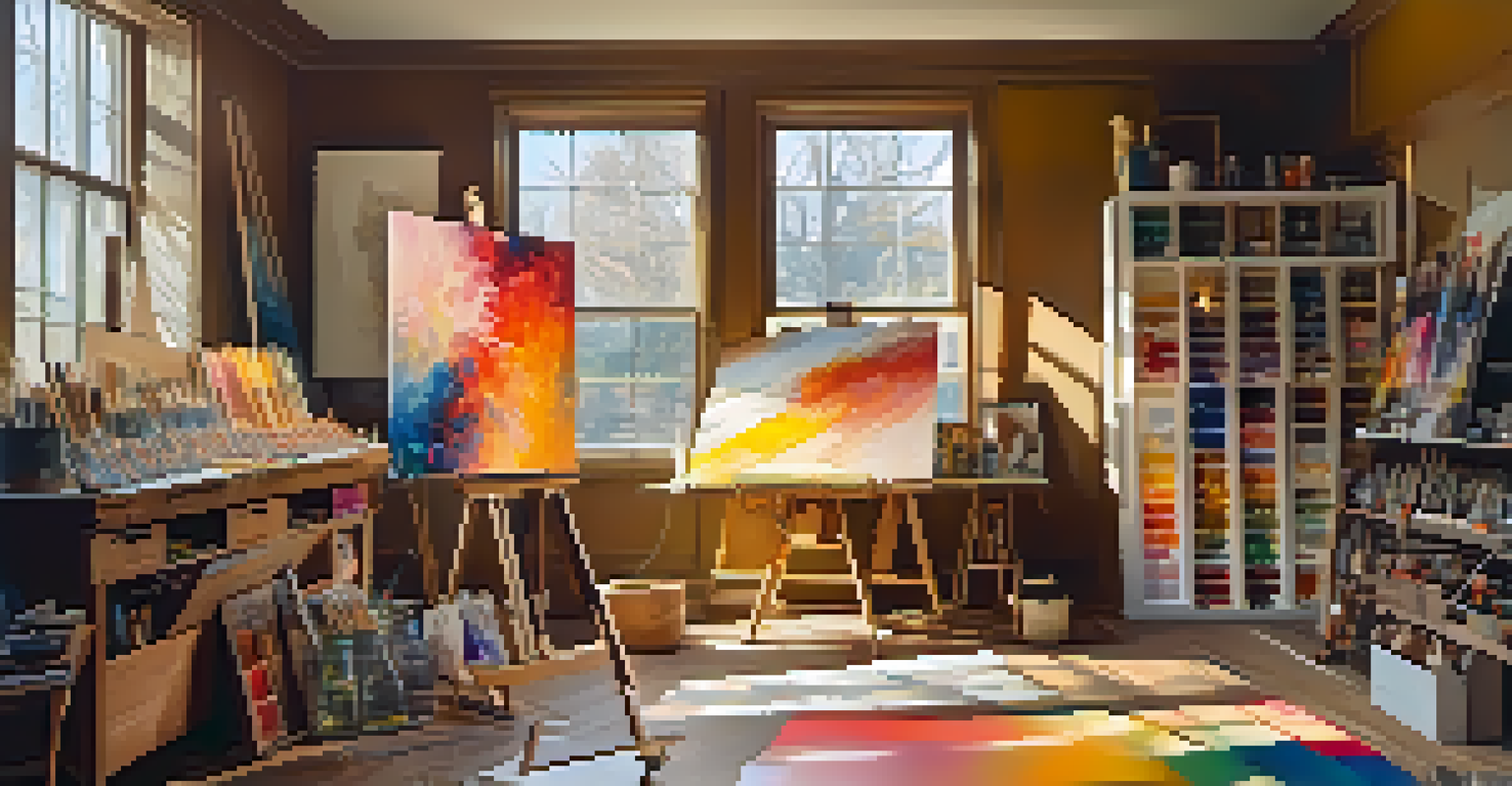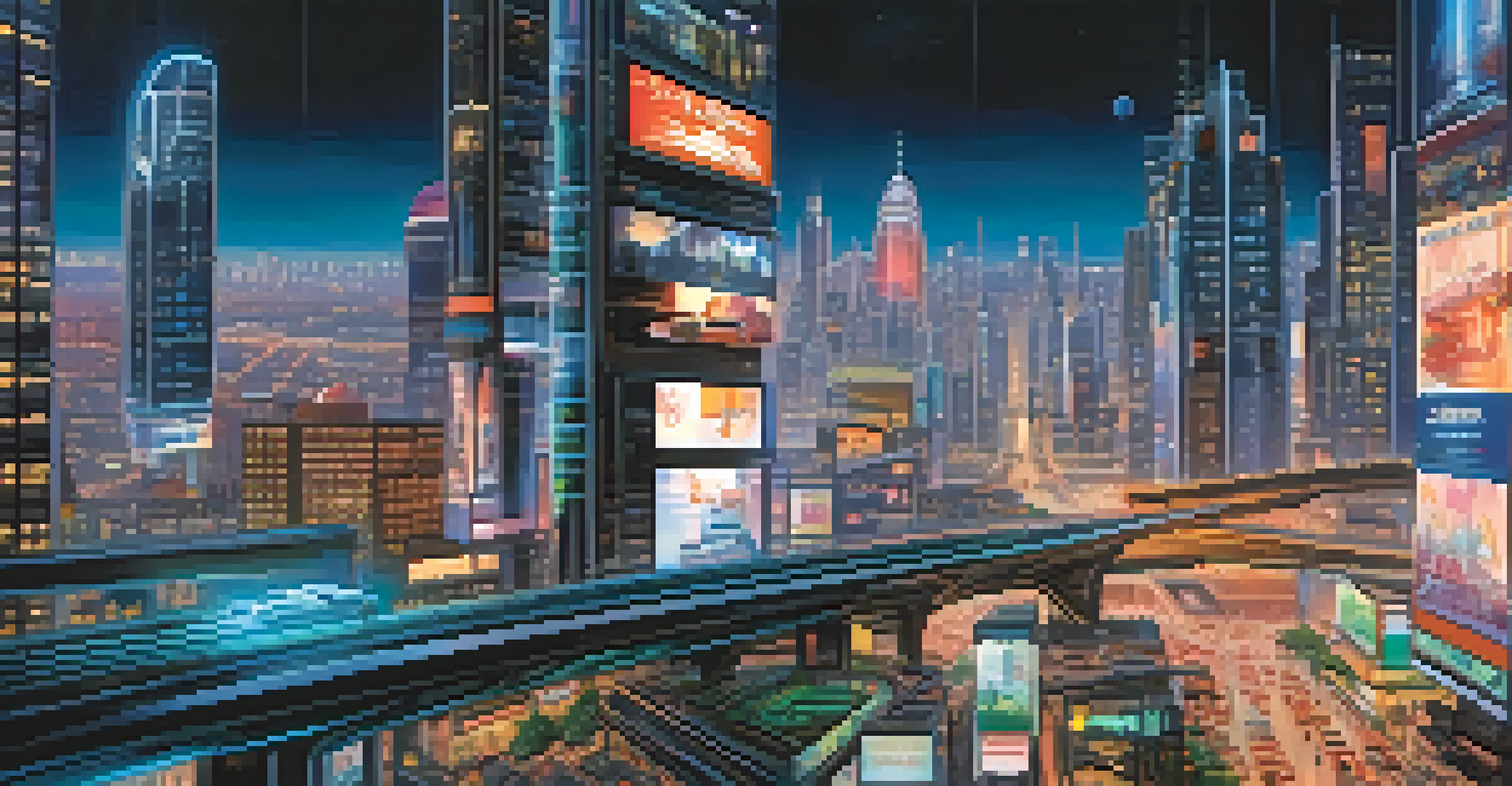The Impact of AI on Artistic Creation and Authenticity

Understanding AI's Role in Artistic Creation
Artificial Intelligence has made significant strides in recent years, transforming various fields—including the arts. Artists are increasingly using AI tools to generate new ideas, compose music, and even create visual art. These tools can analyze vast datasets, learning from countless pieces of art to produce original works that may surprise even the creator.
Art is not a mirror held up to reality, but a hammer with which to shape it.
Imagine a painter who uses AI to suggest color palettes or a musician who collaborates with an algorithm to compose melodies. This partnership between human creativity and machine efficiency opens up a world of possibilities, allowing artists to experiment in ways that were previously unattainable. However, this leads us to question: what does it mean for art to be 'created'?
As we delve into this topic, we must consider the balance between human intuition and machine-generated output. While AI can produce impressive results, the essence of art often lies in the human experience and emotion behind the creation. This dichotomy sets the stage for a deeper exploration of artistic authenticity.
AI as a Tool: Enhancing Creativity or Replacing It?
When we think of AI in art, it's essential to recognize it as a tool rather than a replacement for human creativity. Just as the camera revolutionized photography, AI can enhance an artist's ability to express their vision. Artists can leverage AI to push the boundaries of their imagination, tapping into a wealth of inspiration that extends beyond their own experiences.

For instance, consider an artist who uses AI-generated designs as a starting point, refining them with personal touches. This collaborative approach can lead to unique creations that blend human artistry with machine precision. However, the line between enhancement and replacement becomes blurred, raising questions about the role of the artist.
AI Enhances, Not Replaces Artistry
AI serves as a powerful tool that can enhance human creativity, pushing artists to explore new boundaries in their work.
Ultimately, the true value of art lies in its ability to convey emotion and provoke thought. While AI can assist in the creative process, it cannot replace the depth of human experience that informs artistic expression. This ongoing conversation invites us to reflect on the nature of creativity itself.
The Challenge of Authenticity in AI-Generated Art
As AI-generated art becomes more prevalent, the concept of authenticity is coming under scrutiny. Traditionally, authenticity in art is tied to the artist's intent and the emotional journey behind each piece. However, when an algorithm creates a work, can we still attribute authenticity to it? This question has sparked debates among artists, critics, and collectors alike.
The greatest artist is not necessarily the one who creates the most, but the one who inspires others to create.
For instance, an AI might generate a stunning painting that critics hail as a masterpiece. Yet, does it hold the same value as a piece created by a human with a personal story? This challenge forces us to reconsider our definitions of art and authenticity, as the lines between creator and creation become increasingly blurred.
As we navigate this new landscape, it's crucial to recognize that authenticity may evolve rather than diminish. Perhaps it's not solely about the creator but also the impact the art has on its audience. This shift in perspective invites us to engage with art in fresh ways, questioning how we relate to the creative process.
Ethical Considerations in AI Art Creation
The rise of AI in artistic creation also brings forth ethical dilemmas that merit discussion. Who owns the rights to a piece created by an AI? Is it the programmer, the user, or the AI itself? These questions are vital as they have implications for copyright laws and intellectual property rights in the digital age.
Moreover, the datasets used to train AI often include works from countless artists, leading to concerns about plagiarism and the appropriation of styles without proper credit. As artists express their fears about losing their unique voice, it's crucial to create frameworks that protect individual creativity while allowing for innovation.
Authenticity in AI Art Is Complex
The rise of AI-generated art challenges traditional concepts of authenticity, as it forces us to reconsider the emotional intent behind creations.
As we explore the intersection of ethics and creativity, we must advocate for transparency in AI development. By establishing guidelines that respect human creativity while embracing technological advancements, we can foster a healthier relationship between artists and the tools they use.
Audience Perception: How Viewers Respond to AI Art
The way audiences perceive AI-generated art is a fascinating aspect of this discussion. Some viewers are intrigued by the novelty and complexity of AI art, appreciating the innovative techniques behind its creation. Others, however, may feel disconnected, questioning the emotional resonance of a piece that lacks a human touch.
This varied response highlights the importance of context in understanding AI art. When viewers are informed about the creative process and the technology behind a work, they may be more inclined to appreciate it. For instance, art exhibitions showcasing AI-generated pieces often include explanations of how the art was created, bridging the gap between technology and emotion.
As audiences become more familiar with AI in the arts, their perceptions may evolve. Engaging with AI art could lead to a broader appreciation for the diverse ways creativity can manifest, encouraging deeper conversations about the role of technology in our lives.
The Future of Artistic Creation in an AI-Driven World
Looking ahead, the future of artistic creation in an AI-driven world is both exciting and uncertain. As technology continues to advance, we can expect new forms of collaboration between artists and AI, leading to innovative art that challenges our perceptions. This evolution may result in entirely new genres and mediums, expanding the boundaries of creativity.
However, this future also requires artists to adapt and evolve alongside technology. Embracing AI as a collaborator rather than a competitor will be crucial for artists who wish to thrive in this changing landscape. By leveraging AI's capabilities, artists can focus on their unique vision while utilizing technology to enhance their work.
Ethics Shape AI Art's Future
Ethical considerations, including ownership and the potential for plagiarism, are crucial as artists navigate the integration of AI into their creative processes.
Ultimately, as we embrace this new era of creativity, it’s essential to maintain the human element at the forefront. The fusion of technology and artistry should celebrate human emotion, experience, and connection, ensuring that the heart of artistic expression remains intact.
Final Thoughts: Embracing Change in Artistic Expression
In conclusion, the impact of AI on artistic creation and authenticity is a multifaceted topic that invites ongoing exploration. While AI offers exciting possibilities for innovation and collaboration, it also challenges our traditional notions of artistry and authenticity. As we navigate this evolving landscape, we must remain open to change while honoring the emotional core of art.
Artists, audiences, and technologists alike have a role to play in shaping the future of art. By engaging in thoughtful discussions and embracing the potential of AI, we can foster an environment where creativity flourishes. This collaborative spirit can lead to a richer understanding of what art can be in this digital age.

Ultimately, the journey of integrating AI into artistic expression will be an exploration of both technology and humanity. As we move forward, let's celebrate the fusion of these worlds, ensuring that art remains a vibrant reflection of our shared experiences.